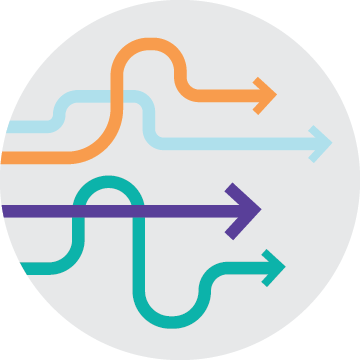HPV screening and follow-up pathway
Return to routine screening
 Recommendation: Clear criteria should be in place and made clear to participants to exit colposcopy and return to routine screening.
Recommendation: Clear criteria should be in place and made clear to participants to exit colposcopy and return to routine screening.
Key evidence and implementation considerations:
- Coordinate with colposcopy services and primary care to ensure criteria for colposcopy exit and return to routine screening are clearly communicated to participants.
- Ensure participants feel supported and understand next steps after a colposcopy, which may include a period of waiting, repeat HPV testing, cytology, or treatment before returning to routine screening.1
- Clear pathways should be in place upon colposcopy referral to ensure clear accountability following a participant’s colposcopy appointment (e.g., does the participant return to primary care after colposcopy or is individualized follow-up required).
- A standard discharge letter to primary care providers can be helpful to ensure participants understand next steps, including any required surveillance after colposcopy.
- Automating discharge letters through an organized screening program would help avoid skipping patients.
Treatment
Providing in-depth guidelines and considerations for treatment of cervical cancer is beyond the scope of this pathway. All new diagnoses of cervical cancer should be referred to the local gynecologic oncology program.
Determining the next steps after colposcopy has been completed
Factors to consider when deciding next steps after colposcopy may include:1
- adequacy of colposcopy examination
- high-risk HPV status
- grade of cytology
- biopsy results and impression of cervical intraepithelial neoplasia (CIN)
- colposcopic impression of CIN
- other variables such as patient preference
- Canadian Partnership Against Cancer. HPV primary screening and abnormal screen follow-up for cervical cancer environmental scan. 2021. Accessed January 19, 2022. Available from: https://www.partnershipagainstcancer.ca/topics/hpv-primary-screening-environmental-scan/
Learn more about the HPV screening and follow-up pathway
